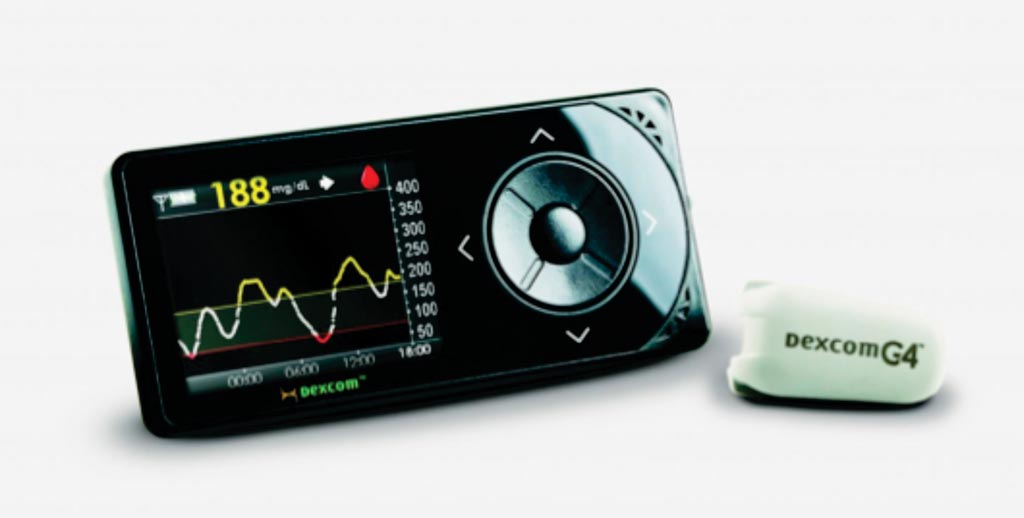Diagnostic Tool Created for Hypoglycemia-Associated Autonomic Failure
By LabMedica International staff writers
Posted on 14 Aug 2018
Low blood sugar, or hypoglycemia, is a major complication of type 1 and type 2 diabetes. People with diabetes can have difficulty self-administering the exact insulin dose at the correct time to keep blood sugar levels in healthy ranges.Posted on 14 Aug 2018
Hypoglycemia-associated autonomic failure (HAAF) is a serious condition characterized by drastically reduced neuroendocrine responses to hypoglycemia, and the loss of physiological symptoms of hypoglycemia, or hypoglycemia unawareness. The development of HAAF can lead to ever-worsening and often life-threatening episodes of severe hypoglycemia.

Image: The G4 Platinum continuous glucose monitoring (CGM) system (Photo courtesy of Dexcom).
Scientists at the Pennington Biomedical Research Center (Baton Rouge, LA; USA) and their colleagues measured glial acetate metabolism via carbon-13 magnetic resonance spectroscopy during infusion of [1-13C] acetate before and after a 72-hour fast in six metabolically healthy men. All participants were male, aged 18 to 40 years, with a Body Mass Index of 20.0–27.9 kg/m2. Continuous glucose monitoring was used to measure hypoglycemic episodes during the 72-h fast.
Glial acetate metabolism was determined via magnetic resonance spectroscopy (MRS) performed on a GE 3T Signa HDxt magnet with a single loop (8-cm diameter) radiofrequency (rf) coil. Plasma or serum levels of blood glucose (BG), beta-hydroxybutyrate (BHB), free fatty acids (FFA), glucagon, insulin, epinephrine and norepinephrine levels were measured. A G4 Platinum continuous glucose monitoring (CGM system) was used to measure interstitial glucose.
The investigators reported that all subjects had normoglycemia (85.1 ± 2.8 mg/dL) on day 0 (following a 12-h fast). Blood glucose levels were significantly reduced on day 3 (following the 72-h fast), exhibiting a 16% decrease relative to values obtained on day 0. Serum concentrations of FFA, glucagon, and epinephrine were significantly increased on day 3, and serum norepinephrine and acetate levels, however, were not changed. Steady-state GAM increased significantly from 53.5 ± 3.7 to 61.9 ± 1.7% following the 72-hour fast. This increase correlated with greater duration of hypoglycemia experienced during the fast and additionally, subjects with greater GAM at baseline experienced a greater increase in the duration of hypoglycemia experienced during the 72-hour fast.
David H. McDougal, PhD, an assistant professor-research and first author of the study, said, “There is currently no objective way for a health care provider to measure whether a patient has experienced repeated episodes of low blood sugar and therefore may be suffering from HAAF. The results of our study suggest that this adaptation may still be present after exposure to times of low blood sugar and therefore can be used to measure how frequently a person experiences low blood sugar. We believe that by measuring how well a person's brain uses acetate, we might one day be able to determine if they are suffering from HAAF or are at increased risk for developing the condition in the near future.” The study was published online on June 22, 2018, in the journal Acta Diabetologica.
Related Links:
Pennington Biomedical Research Center














